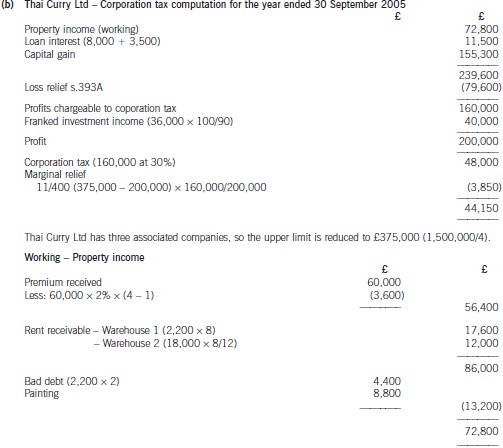备考ACCA考试之marketing和selling的区别,了解一下?
发布时间:2020-08-15
marketing和selling什么区别?很多小伙伴们都不是很了解,经常把它们弄混,下面51题库考试学习网就带领大家一起来看看,想要了解的小伙伴赶紧来围观吧。
这里指的是成本如果按照耗用成本的部门来进行划分的话,分为生产部门的成本、市场部分的成本、研发部门的成本、行政管理部门的成本以及销售部门的成本。
销售和市场的区别可参考下列的几条来进行理解:
1、对象不同:
市场(营销)的对象是整体企业目标市场,所以,更加注重整体形象的推广以及对市场的研究。做营销时就需要研究客户的采购习惯、购买心理、目标价位、等等,然后确定公司产品定位,包括价格等等,然后,根据市场选定目标客户等等。
销售的工作对象 是具体的潜在客户和客户,比如,他与潜在客户建立联系、约时间介绍公司情况、了解该客户的需求、与客户讨论产品的具体需求,然后与客户建立合作关系并开始
确认订单;这些销售同样是需要研究客户,但是,他研究的是具体的公司和具体的人。他不需要决定公司卖什么产品,多少价格、如何做广告等;
2、工作方式不同
做市场的时候主要是收集情报,然后研究,规划如何将产品导入市场和如何对待现有产品等等;
销售主要是不停地与具体客户联系,倾听具体客户的具体诉求是他们的主要工作,处理客户的定单是他们工作最为具体内容。
3、工作目的不同:
市场的决策很重要,决策是他们的工作目的,销售成绩是对他们的工作的一个考验,而不是他们考核销售;任何错误的决策都可能导致公司经营上的滑坡;销售对每
个客户负责,期望在与其他供应商的竞争中以自己的专业素质和人格魅力获得优势,从而稳住客户或赢得新市场;他们的工作不存在低级或高级,只能说市场营销为 销售服务;销售是直接使公司获得优势的;他们的工作从程序上讲是先后关系与合作关系。市场营销更多地靠创意与分析;销售更多地靠专业和人格魅力。
4、做销售是短兵相接,实现产品/服务/项目卖出,同时把货款收回;做市场就不一样了市场是帮助策划、出主意、出谋略帮助卖出去,卖的更多、更快、价格更
高、更久、钱收回更及时,做市场是运筹帷幄,决胜千里,所以也可以叫营销,它包括产品、价格、渠道、促销、公关、人员、政府权利、探查、分割、优先、定 位、员工。
5、销售负责任务完成、是“干”,营销是帮助,重在回答和解决怎么“干”。营销工作主要是市场调研、市场分析、竞争分析、营销策略如产品策略、价格策略等制定、活动策划等,是“谋”的问题。
6、销售人员是劳力者;市场人员是劳心者。做销售仅需要高中文化就行了而做市场却需要大学以上的文化。市场包含销售,可以说销售是市场的组成部分。
以上是本次51题库考试学习网带给大家的全部内容,小伙伴们都清楚了吗?欲了解更多关于ACCA考试的资讯,敬请关注51题库考试学习网!
下面小编为大家准备了 ACCA考试 的相关考题,供大家学习参考。
(b) (i) Calculate the inheritance tax (IHT) that will be payable if Debbie were to die today (8 June 2005).
Assume that no tax planning measures are taken and that there has been no change in the value of any
of the assets since David’s death. (4 marks)

(b) Assuming that Thai Curry Ltd claims relief for its trading loss against total profits under s.393A ICTA 1988,calculate the company’s corporation tax liability for the year ended 30 September 2005. (10 marks)

(b) Assess the likely strategic impact of the new customer delivery system on Supaserve’s activities and its ability
to differentiate itself from its competitors. (10 marks)
(b) Supaserve, through its electronic point of sale system (EPOS), is already likely to have useful information on the overall
patterns of buying behaviour in terms of products bought frequently, peak periods, etc. It is less likely to have detailed
information on individual customer purchase patterns, though it may be monitoring where its customers are living, travel
patterns, etc. The introduction of the new online system has the potential to have a major strategic impact on the company
and its relationship with its customers. Impact can be measured by assessing the significance of the change on the company’s
operations and the likelihood of its occurrence. In Michael Porter’s words, ‘the basic tool for understanding the influence of
information technology on companies is the value chain . . . and how it affects both a company’s cost and the value delivered
to buyers’.
Clearly the investment in Internet based technology will affect both the cost and revenue sides of the business. In terms of
operations the company will need to decide the way in which to integrate the new method of customer buying with its
traditional methods. Does it create a separate ‘dedicated’ warehouse operation solely involved with the online business or does
it integrate it within its existing operations? The customer will have immediate access to information on whether goods are in
stock or not, and this may have a significant impact on the procurement systems Supaserve has with its suppliers and the
inbound logistics which get the products to where they are needed for dispatch to the customers.
Online shopping will have a major impact on outbound logistics in that a totally new distribution process will have to be
created. The extent to which this new service is provided in-house by setting up a new activity within Supaserve, or
alternatively is outsourced to specialist distributors is a key decision affecting costs and efficiency. Supaserve’s delivery
performance will be both measurable and potentially available to competitors and a real source of competitive advantage or
disadvantage.
The new online system will have an immediate impact on marketing and sales. Can customers pay over the Internet?
Opportunities for direct marketing to individual customers are opened up and customisation becomes a real possibility.
Customers can link into after-sales services and provide insights into customer satisfaction. On the support side of the value
chain the impact on human resources may be profound and technology lies at the heart of the change. Above all there is a
key need to link the new strategy to the operational systems needed to deliver it.
Clearly, the introduction of the online shopping system offers an opportunity for Supaserve to differentiate itself from its
aggressive competitors. The online service, as suggested above, is likely to appeal to a limited but growing segment of its
customers. In strategic terms it is a focus differentiation strategy enabling Supaserve to provide an improved level of service
to its customers. For this customers are willing to pay a small premium. Perhaps the more significant impact on its profit
margins will be derived from improved levels of customer retention and the attraction of customers who formerly shopped
with its competitors. The ability to sustain its competitive advantage will be measured by the impact on its competitors and
their ability to introduce a similar service.
There are a number of useful models for assessing the impact of an IT related change. These could include the five forces
model and the frameworks developed by Michael Earl assessing the strategic impact of IT. Michael Earl argues persuasively
for the correct alignment between business strategy and IT strategy. Indeed he sees a need for a ‘binary approach’ with the
alignment of IT investment activities in existing ways of doing business as having to be accommodated with the IT investments
associated with more radical change to the ways business is conducted.
声明:本文内容由互联网用户自发贡献自行上传,本网站不拥有所有权,未作人工编辑处理,也不承担相关法律责任。如果您发现有涉嫌版权的内容,欢迎发送邮件至:contact@51tk.com 进行举报,并提供相关证据,工作人员会在5个工作日内联系你,一经查实,本站将立刻删除涉嫌侵权内容。
- 2020-08-15
- 2020-10-10
- 2020-09-05
- 2020-10-18
- 2020-10-10
- 2021-05-29
- 2021-05-29
- 2020-10-10
- 2019-11-14
- 2019-01-04
- 2021-05-29
- 2020-09-04
- 2019-12-29
- 2020-01-02
- 2020-10-10
- 2020-10-18
- 2020-10-10
- 2020-09-05
- 2021-02-13
- 2021-02-13
- 2020-10-18
- 2020-10-21
- 2021-02-13
- 2021-02-13
- 2021-05-29
- 2021-02-21
- 2020-01-01
- 2020-10-18
- 2020-09-05
- 2020-10-10